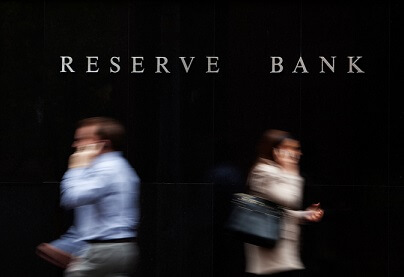
On the first Tuesday of the month, the Reserve Bank of Australia (RBA) released the latest minutes of its monetary policy meeting, announcing that it considered the neutral cash rate to be 3.5%, a two percentage point increase over the current record low cash rate of 1.5%
While this news sent the market into a frenzy and caused the Australian dollar to shoot up in the process, mortgage holders need not panic according to Greg Jericho, an economics writer for the Guardian Australia.
“The RBA might wish to get the cash rate to 3.5% but the economy would have to perform a lot better than it is, and for a long time, for that to occur,” he said.
The inclusion in this month’s RBA minutes of a discussion on the neutral real cash rate was bound to trigger a reaction. “The neutral real cash rate is essentially the cash-rate point above inflation where it is essentially having no impact on economic growth,” Jericho said. “This is important because it reflects – all other things being equal – whether the RBA is trying to speed up or slowdown the economy.”
According to the RBA’s minutes, the rate was broadly stable until around 2007, but has since fallen by approximately 150 basis points to around 1%. Given that the Reserve Bank pitches for an inflation rate of 2.5%, this equated to a neutral nominal cash rate of about 3.5%.
The market shot up because investors took this as a sign that the Reserve bank was about to raise rates. “Of course the RBA would think the neutral rate is higher than it currently is – we are experiencing record low interest rates, and we have them because the RBA is doing what it can to bolster investment at a time when mining investment is going through the floor,” Jericho said.
Talk of interest rates being two percentage points higher than they are now is bound to upset many mortgage holders. Rising rates would send the average mortgage rate from 5.25% to 7.25%. For a mortgage of $400,000, the increase would equate to paying an additional $522 a month – which could be devastating for some of the most vulnerable households.
As worrying as this scenario would be, Jericho insists it’s not about to happen soon.
First off, setting the neutral cash rate at 3.5% is not all that surprising. For most of the past 25 years, the cash rate has been above that level after all. “Just 10 years ago [a 3.5% cash rate] would have seemed like a rate almost impossibly low and only associated with a recession.”
For the Reserve Bank to get rates down to where they are now, they’ve had to cut the cash rate by a lot more than they’ve had to do in the past. “But that the cash rate is below the ‘neutral rate’ only means that at some point in the future the RBA would like interest rates to rise – should other factors permit. And those factors are not present at the moment,” Jericho said.
And while the recent 3.3% increase in minimum wages might lead to an increase in overall wages (which could cause the Reserve Bank to raise interest rates slightly), this is still a long way from a two percentage point rise. For that to happen, there would have to be consistent and strong wage growth.
“The reality is the RBA will not shift on rates until wages start rising consistently faster than inflation and when it is confident raising rates will not hurt the grass shoots of economic growth we have recently observed,” Jericho said. “The RBA might want to one day get the cash rate to 3.5%, but at the moment the conditions for such a move look well off into the future”.
Collections: Mortgage News


Share